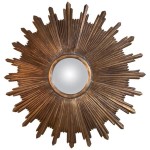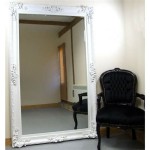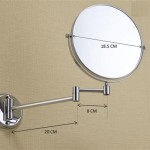Floor Mirror Stand DIY: A Comprehensive Guide
A floor mirror is a versatile addition to any room, offering functionality and style. Building a DIY stand for a floor mirror allows for customization in terms of size, material, and finish, while potentially saving money compared to purchasing a pre-made option. This guide provides a step-by-step approach to constructing various types of floor mirror stands.
A-Frame Stand
The A-frame stand is a classic and stable design suitable for rectangular or oval mirrors. Its simplicity makes it an ideal project for beginners. The basic materials required include two lengths of wood for the legs, a crossbeam, hinges, screws, and wood glue.
Begin by measuring the mirror's width and determining the desired height of the stand. Cut the two leg pieces to the calculated length, ensuring they are identical. The crossbeam should be slightly longer than the mirror's width. Angle the ends of the legs and the corresponding ends of the crossbeam to create the A-frame shape. The angle should be such that the stand provides adequate support and stability. Attach the crossbeam to the legs using hinges, allowing for the stand to be folded flat for storage.
Next, secure the mirror to the stand. Wood cleats can be attached to the crossbeam, creating a lip to hold the mirror in place. Alternatively, specialized mirror clips can be used. Ensure the mirror is centered and securely fastened. Finish the stand by sanding any rough edges and applying paint or stain as desired. Felt pads can be added to the bottom of the legs to protect flooring.
Easel Stand
An easel stand offers a more artistic and adjustable option, particularly suited for smaller, lighter mirrors. Materials required include wood for the legs, a support beam, hinges, screws, a chain or rope, and wood glue.
Construct the easel legs similarly to the A-frame stand, but with a steeper angle. Attach a support beam between the legs near the top, creating a triangular structure. The mirror will rest against this support beam. A chain or rope is then attached between the legs, a short distance below the support beam, to limit the backward tilt of the easel and provide stability.
Secure the mirror to the easel by attaching small cleats to the support beam, preventing the mirror from sliding. Alternatively, consider adding a small ledge to the bottom of the easel to hold the mirror's base. Finish the stand with sanding and painting or staining as desired.
Leaning Stand
A leaning stand offers a minimalist and contemporary look. It's simpler to construct than the previous options, requiring only two lengths of wood and screws.
Cut two identical lengths of wood, ensuring they are longer than half the height of the mirror. Angle the ends of the wood pieces to create a leaning support. The angle should be shallow enough to provide stability while allowing the mirror to lean against a wall. Secure the two pieces together using screws, forming a stable "L" shape.
Position the assembled stand against the wall and lean the mirror against it. Ensure the stand provides adequate support. Non-slip pads can be added to the contact points between the stand, mirror, and wall to enhance stability and prevent scratches.
Considerations for Different Mirror Types
The type of mirror influences the stand design and construction. Heavy, large mirrors require sturdy stands with wider bases and stronger materials. For instance, a full-length mirror benefits from a robust A-frame stand or a wall-mounted leaning stand with substantial support. Smaller, decorative mirrors can be accommodated by lighter easel stands or leaning stands.
The mirror's frame also plays a role. Frameless mirrors might require specialized clips or adhesive methods for secure attachment to the stand. Framed mirrors can often be secured using cleats or by incorporating the frame into the stand's design.
Material and Finish Selection
Wood is a popular choice for DIY mirror stands due to its versatility and ease of working. Hardwoods offer greater durability, while softwoods are more budget-friendly. Metal, such as steel or aluminum, can also be used, providing a more industrial aesthetic. Choose a material that complements the mirror and surrounding décor.
The finish should also align with the overall design scheme. Painting, staining, or sealing the wood protects it from moisture and enhances its appearance. Metal stands can be powder-coated for durability and a range of color options.
Safety Precautions
Safety should be a primary concern throughout the construction process. Always wear appropriate safety glasses when working with power tools. Use gloves to protect hands from splinters and sharp edges. Ensure the stand is stable and securely supports the mirror to prevent accidents. Regularly inspect the stand for any signs of wear or damage.
Careful planning, precise measurements, and appropriate material selection are crucial for a successful DIY floor mirror stand project. By following these guidelines and adapting them to individual needs and preferences, one can create a functional and stylish stand that complements any mirror and enhances the overall décor.

20 Diy Mirror Stand Ideas Crafts

Diy Modern Floating Floor Mirror Tutorial And

Diy Wooden Floor Standing Mirror With Useful Shelf

Diy Minimal Floor Mirror The Merrythought Decor

How To Build Large Floor Leaner Mirror Sawdust 2 Stitches

Large Standing Floor Mirror Love Home Decor Rustic Mirrors

Diy Modern Floating Floor Mirror Tutorial And

Diy Wooden Floor Standing Mirror With Useful Shelf

Building A Large Mirror Stand

Standing Mirror Floor Easel Diy Flooring








